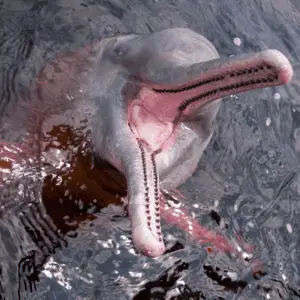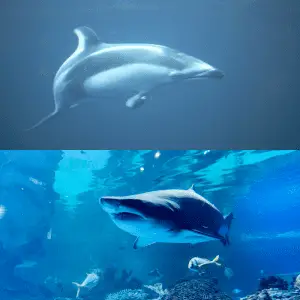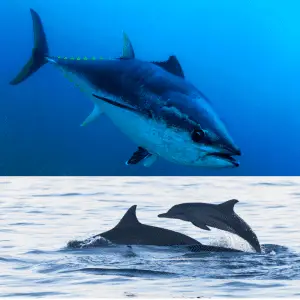No dolphins can not smell underwater or above the water’s surface, as they are missing the complete olfactory organ with all the nerves. Without this organ, it’s impossible for a dolphin or any other animal to have any sense of smell.
We now know that dolphins don’t have the entire, complete olfactory organ, meaning they can’t smell even if they want to.
Can dolphins taste?
Dolphins have a keen sense of taste, even though they can’t smell. Dolphins can taste sweet, sour, salty and bitter flavours. However, the extent of their taste buds is still being studied.
Let’s learn about their other senses that make up for the loss of smell of a dolphin.
For example, the eyesight of the dolphins in and out of the water is exceptional.
The sense of touch of the dolphins is also quite sharp as they have densely packed nerve endings all over their bodies.
These animals can hear sound frequencies several times higher than that of humans.
Eyesight
The eyesight of a dolphin is quite exceptional from other animals. Even though aquatic mammals breathe oxygen, they need extraordinary vision to see above and below the water’s surface.
As aquatic mammals like dolphins evolved from land mammals, their eyesight was exceptional.
The eyesight of these mammals was originally adapted only for sight on land. The evolutionary process has changed their eyes to see both on land and underwater.
This adaption is an exceptional one that we can see in dolphins. The reason is that the eyes designed to see clearly in the air almost always lose their focus when underwater. However, for dolphins, this is not the case. They can see clearly above water and underwater!
The reason is that light waves travel slower in water compared to air. The light rays tend to bend when it passes the water’s surface, making everything different.
Land mammals typically have spherical eyes, whereas aquatic animals have elliptical eyes that help them to see underwater clearly.
The muscles around the eyes that maintain the movement of these organs are also significantly different between aquatic animals and land animals.
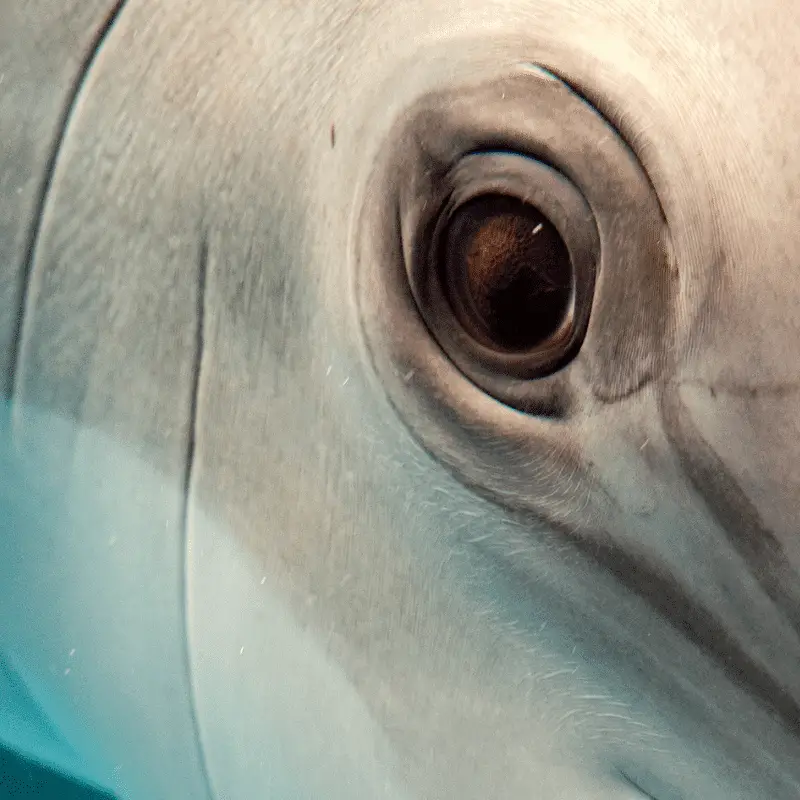
The light levels in the water are another problem that the dolphins have to deal with. Even though it gets dark underwater, the light levels are pretty strong at the water’s surface.
The eyes of the dolphins also have to deal with the difference between the intensity of light they experience and the depth.
The dolphins quickly adapted their eyes to see clearly in places with different light intensities.
The dolphins have large pupils, which help them absorb light, ensuring better vision in low-light situations.
Like humans, dolphins can also contract their eyes in two narrow slits when the light intensity increases.
This optional contraction allows them to draw in only the required light that helps them see clearly at the water’s surface.
In most cases, many Dolphin species keep on turning their heads to use only one eye.
You can see this unique behaviour of a dolphin at the ocean’s surface level and deep down.
Dolphins are colourblind and do not see all the colours we can see. It is assumed that dolphins can see colours like yellow and red, which the water gets absorbed.
In most cases, dolphins see objects with a bluish-green tinge.
Recommended Read: Can Dolphins Survive On Land?
Touch
Dolphins have tactile sensations that are extremely important. Over millions of years, dolphins have developed highly specialised and complex skin that helps them survive underwater.
A dolphin’s skin contains a complex system of organised nerve endings, which helps them get information from the surrounding area.
The nerve endings are greater in certain parts of a dolphin’s body than in others.
The dolphins’ unique structure helps them swim more efficiently underwater.
The dolphins’ unique shape and size also help them swim efficiently and effectively at high speed.
Just like whales, dolphins also use their sensitive skin as a sensor. With the help of nerve endings, they gather information about the pressure of the water around them.
The particular areas of their skin can also help them grasp how fast they are going.
The nerve endings located in the various parts of their body can also help the dolphins catch up on the sound-frequency vibrations.
Dolphins also have a unique breathing system. The dolphins have a breathing hole on the top of their head which they close down using the strong muscles surrounding it. They need air to survive. The dolphins also have several nerve endings in this area.
Nerve endings help them understand whether they have cleared the water’s surface correctly and whether they should open up their blowhole for breathing.
Hearing
Even though dolphins do not have external ears, they still have ears. You can spot the small ear holes located just behind their eyes.
Dolphins open up earholes when they go above water. But once they dive underwater, they close these ear holes to stop the water from coming into their bodies.
The dolphins use their lower jawbone to catch the sound frequencies travelling through the water when underwater.
The robust jawbone of the dolphins acts as a conductor of the sound waves, and the information is passed into the middle ear, which is located near the lower jaw portion.
Learn more about the special hearing of a dolphin. Here I have written an article that goes into more depth.
Do dolphins have nostrils?
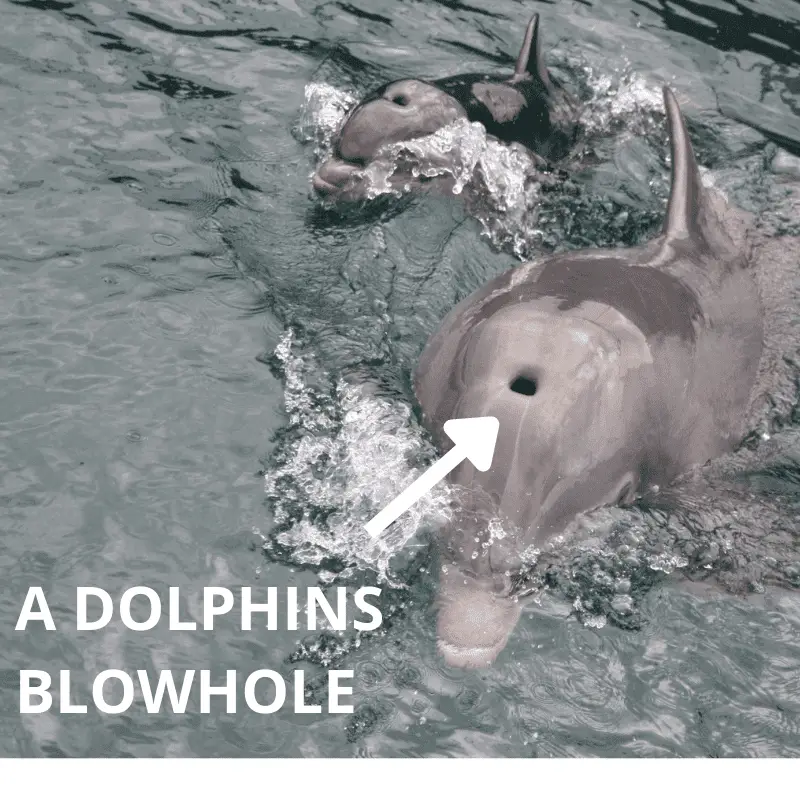
No, dolphins don’t have traditional nostrils as humans do. Instead, they have a blowhole located at the top of their head that they use to breathe when they reach the water’s surface. This blowhole opens and closes using strong muscles as they enter and exit the water.
How long can a dolphin hold its breath?
Dolphins cannot breathe underwater but can hold their breath for about 8-10 minutes. After that, they need to go to the surface for air.
Recommended Read: How Do Dolphins Sleep?



